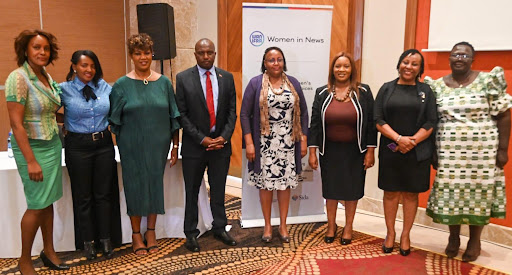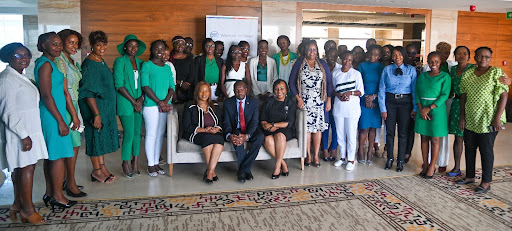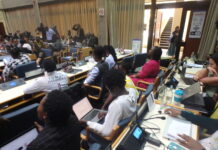By Arasha Soila
Nairobi, Kenya: While women still are underrepresented, steps toward gender equality in positions of leadership remain slow. According to data analyzed by Women In News leadership mapping, Kenya ranks lowest compared to Uganda, Tanzania, and Zambia with no women holding top business positions such as CEOs in our media organizations and only 33% making it in the editorial lead positions. The mapping consists of data collected and analyzed in 192 media organizations in 17 countries.
During a skills-building and networking conference held in Nairobi by the Women In News Alums Chapter, issues on reinvention in an ever-changing media landscape were discussed. Additionally, operational sustainability and stability, equality and equity in the media sector, and how to manage and prevent sexual harassment were also talked through.
Sexual harassment remains a key deterrent making women leave the workspaces as they find it not conducive. According to a 2020-2021 report by WAN-FRA 1 in 2, women have faced both physical and verbal harassment, verbal sexual harassment being more prevalent. The report further states that globally the prevalence of sexual harassment in the media is at 40% while in Kenya it is at 56%.
Speaking on behalf of the ICT Cabinet Secretary, Eliud Owalo, the National Director of Public Communications in the ministry Miriam Rahedi, appealed to the media houses to implement the 1/3 gender rule. “As the government thrives to achieve the 1/3 gender rule, newsrooms should also implement the same. This clearly demonstrates that there is a need to have conversations on gender parity in our newsrooms,” she said.
Media Council Of Kenya, CEO, David Omwoyo also urged women journalists to leverage advances in technology to remain relevant in the fast-paced newsrooms. “Power never gives, power is grabbed. Women should continue fighting for lead spots in their organizations. I encourage you to keep pushing for recognition as key leaders in the media space as you have lots of skills and resilience that can be impactful if aptly applied,” he reiterated.

AMWIK’s Executive Director, Patience Nyange observed that women’s day-to-day workplace experiences in media are worse than those of men. “Research findings in many jurisdictions establish that women in media are judged by different standards than men which they say makes it difficult to achieve parity in senior management in their workplaces,” she said during the conference. She explained this by citing that the lack of advancement for women is curtailed by limited access to internal and external pathways to the top, which potentially means that existing corporate structures must be challenged.
The media industry in Kenya is heavily male-dominated at the top. Women journalists at the entry-level are quite many but as you go up, only a handful make it to the editorial and executives. The report by WAN-IFRA reveals a dire picture of women’s under-representation in news. Legal frameworks and policies for gender-based discrimination and harassment exist, however implementing and enforcing them remains a challenge.
“We cannot afford to be complacent, we have to break down the systemic barriers. The media has a critical role in ensuring gender equality,” Betty Sungura, CEO of the National Gender and Equality Commission said. She added by saying that this partnership can create a more equitable and inclusive media landscape.
Eric Oduor, Kenya Union of Journalists (KUJ), Secretary General underscored that KUJ will continue to provide more fair opportunities for women to compete and serve at the highest levels. “We will continue to push this agenda to protect women’s integrity in newsrooms. As KUJ we champion for women to be accorded equal opportunities,” he emphasized.














